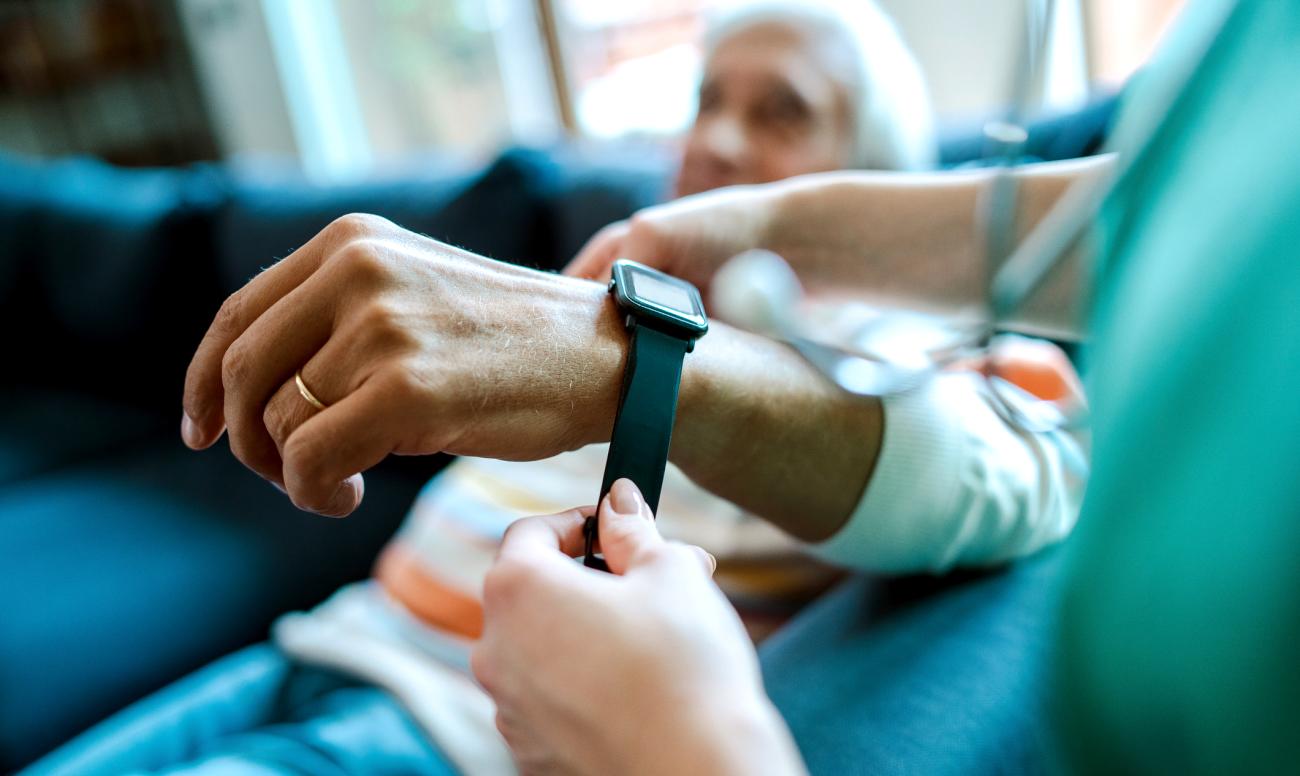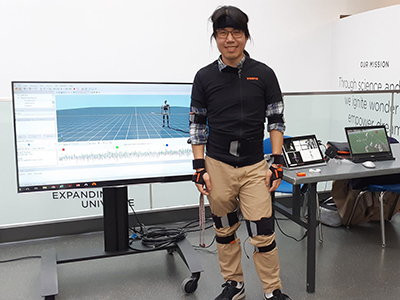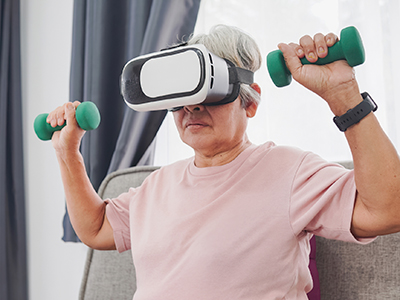
As Canada’s population continues to age, wearable and nearable biosensing technology could help fill care gaps.
The potential of digital and wearable technologies to help treat the often complex health care needs of British Columbia’s aging population inspired Vancouver Coastal Health Research Institute researcher Dr. Calvin Kuo and colleagues at the Centre for Aging SMART and University of British Columbia (UBC) to co-create an innovative project designed to revolutionize health care in the province.
Launched in 2023, the “Care Anywhere: Smart Biosensors to Promote Healthy Aging and Transform Healthcare” training program for engineering, computer sciences and health researcher students will drive new biosensing technology designs, implementations, applications and collaborations.

“A central piece of this program is trying to put students into the mindset of identifying clinical needs that they can solve through research and development,” says Kuo.
Trainees will take part in state-of-the-art courses on wearable technologies and machine learning, as well as interact directly with caregivers and patients in clinical care settings.
“Rapid advances in biosensing technologies — from wearables to personalized medicine — can drive transformational changes in health care delivery.”
Wearable biosensors are worn on the body and range from smart watches to smart rings, earbuds and glasses. Among many other health metrics, they can track heart rate, movements, blood oxygenation and glucose levels. More advanced wearable exoskeletons assist individuals with mobility issues to stand up and sit down safely.
The Care Anywhere program will also introduce students to nearable biosensing technologies that can gather health information from a close distance to a person. These technologies include smart phones, beds, sensors and video cameras that can remotely record and share health data, such as sleep patterns and falls, with clinicians.

“We have technologies that can track someone throughout the day to see how often they are tripping over items, which could indicate a potentially dangerous mobility impairment,” notes Kuo.
Such technologies can be paired with gamification and augmented reality. For example, a patient wearing augmented reality glasses could be guided through a video-game-like exercise routine that also records and shares data on the patient’s performance with their family physician, who may apply the data to make clinical recommendations on exercise modifications and fitness goals, notes Kuo.
Filling gaps to optimize care for older adults

According to the 2022 Statistics Canada census, British Columbians aged 65 and older now constitute over 20 per cent of the provincial population — exceeding one million people. Over 80 per cent of these individuals are likely to have a chronic health condition.
“Chronic health conditions can limit a person’s ability to perform daily activities, such as getting dressed or preparing a meal,” says Kuo. “This can result in the loss of independence and can lead to other health challenges, such as heart disease, falls and fractures.”


